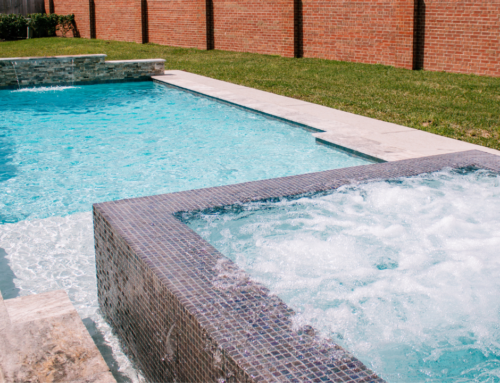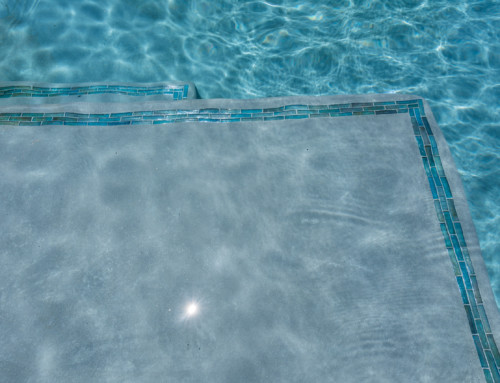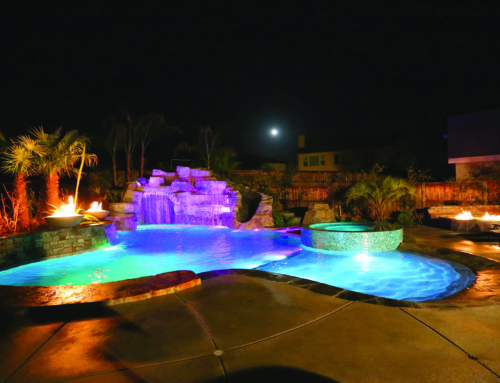Understanding Your Pool Chemicals
This video was made to give you a basic understanding of your pool chemicals and what they’re going to do for you.
Chlorine
The first one obviously is going to be your sanitizer which is going to be chlorine. There are many different ways that you can introduce chlorine into your pool. You can do that with liquid chlorine, granular chlorine, or even tablets.
The one thing with tablets is they do have stabilizers in them, which we will discuss later on. So if you are using a large abundance of those tablets, that will increase your stabilizer as well. But again, we’ll come back to that with your chlorine.
Ideally, you want your levels to be about three parts per million. You can be a little less, a little bit more, but that is the range goal that you’re looking for.
And a lot of times with your salt pools, which has a salt generator generating chlorine, you can actually have those a little bit lower. So that is just the basic concept, that chlorine is there at those levels to help protect and fight bacteria & algae, those types of things. It’s going to sanitize your pool.
pH
The lower it is the more acidic it is, and the higher the more basic it is. The goal that you’re really looking for pH is to be between 7.2 and 7.8. So the ideal range is 7.4 – 7.6. If you go too high, you can create scaling on equipment, your pool, and different things. If you go too low again, you create that acidity, which can start doing harm to again, equipment, metal, parts of the pool, and even the walls of your pool.
Alkalinity
Next, we’re going to talk about alkalinity. Alkalinity is more of a buffer for your pH. In other words, if your alkalinity is out of balance, your buffer is going to be fluctuating and dancing all over the place and it’s going to be harder to maintain. Those alkalinity ratings that you want or anywhere between 80 and 120 parts per million.
You don’t want too low. You don’t want too high. Very basic when it comes to alkalinity.
Calcium Hardness
Next is your calcium hardness. With calcium hardness, you’re looking for 200 to 400 parts per million. Now, with calcium hardness, if it’s way too low and you have a plaster type pull, you’re going to pull that calcium out of that plaster because that’s what that water is wanting and you’re going to lose that longevity of that plaster. If you have it too high, you now start creating that scaling effect and your pull is just not going to look right.
So those, again, are some of the factors there.
CYA
The next one is CYA, your stabilizer. I like to say look at CYA as a sunscreen to your chlorine, meaning if your CYA is too low, not enough in there, it can’t protect the chlorine.
So the sun is going to eat away the chlorine in your pool very quickly. If your CYA is too high, it’s too much sunscreen over those tablets and it’s not allowing them to work the way they want to.
What are those ranges you’re looking for? Usually, around 30 to 50 parts per million is a good CYA on a standard chlorine-type pool.
And if you’ve got a salt pool, again, remember, salt can have a little bit lower on the chlorine side. You want that to be around 60 – 80 parts per million.
So those are just the basics of what those chemicals do.
They’re all important. At the end of the day, it just comes down to what you have. The beauty is with all these chemicals, they are very effective for a plaster pool, a fiberglass pool, and also a vinyl liner pool.
If you can get away with calcium hardness for, say, on a fiberglass and vinyl being a little too low, it’s not going to impact as much as a plaster pool. But the more balanced those readings are. That’s what’s going to help everything else when it comes to your chemicals.
How To Raise Or Lower Pool Chemical Levels
Now that you understand the basics of those chemicals, well, let’s talk a little bit about how you need to possibly raise or lower any of those.
Raising or Lowering Chlorine
With your chlorine, again, if you need to raise it, then you need to add or introduce some type of chlorine to that pool.
If you need to lower it, you need to stop introducing whatever is there and let the sun and the bacteria and algae will already bring it down on its own.
Raising or Lowering pH
When it comes to pH, if you need to raise that up, you can do a pH up. And you can buy that at any of your local pool stores or have your professional pool service company do that for you.
And if you need to lower it, you’re going to use pool acid and that’s going to lower those levels down.
Raising or Lowering Alkalinity
If it’s with alkalinity and you need to raise it, you can use sodium bicarb or it’s baking soda, and that will bring that up.
The other thing, too, with alkalinity and lowering it is it also utilizes pull acid to bring it down. So that will work.
Raising or Lowering Calcium Hardness
When it comes to your calcium hardness, you’re going to add calcium to that pool. You can get it in different percentages, anywhere from like an 86 or 94 But again, your local store or your pool professional can help you with that. That you can add to help bring it up.
If your calcium is too high the best way to bring it down is you need to lower the level of your pool and introduce more tap water.
Now, depending on where you live, your tap water may already be high or it could be really low. I’ve seen in Texas where it’s at 90 and certain areas and I’ve seen up in Utah where they’re already at 200 and something. So it just depends on where you’re at and what kind of water you’re putting back into that pool.
Raising or Lowering Stabilizer
When it comes to your stabilizer, it’s similar to the calcium, meaning we can add more stabilizer, more sandarac acid to bring those levels up, but we don’t have anything to bring it down. So again, you’re either going to need to add fresh water or drain down the pool and then add fresh water.
If your CYA and calcium are really high, you may be better off doing a complete pull drain, let your professional come in and do that while you have it drained.
You could potentially do an acid wash and kind of give it a facelift to that plaster, if you will, and then fill it back up. And that’s going to give you fresh water to work with.
Get a FREE quote
Looking to build a brand new swimming pool or add a spa or water feature to your existing pool? Check out our fantastic pool designs at premierpoolsandspas.com.



